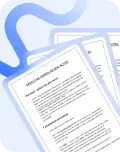#17205 - International Humanitarian Law Combatants And Civilians - International Humanitarian Law / Law of Armed Conflict
[IAC] Combatants and Civilians 2
Geneva Convention III, Art. 4 2
Geneva Convention III, Art. 5 2
Additional Protocol I, Art. 43 3
Additional Protocol I, Art. 44 3
Non-Combatant Members of Armed Forces 4
Medical and Religious Personnel 4
Additional Protocol I, Art. 50 6
Police, Gendarmerie, Domestic Security 6
Note on citations:
For treaties, I have used an abbreviation, followed by a period and the article number. Thus Geneva Convention IV, Article 42 becomes “GC4.42.” Article 2 Common to the Geneva Conventions becomes GC.CA2. The Hague Regulations are HR, and the Protocols Additional to the Geneva Conventions are AP1 & AP2.
Citations in the form “HB000” refer to section numbers in Fleck, The Handbook of International Humanitarian Law (3rd ed.).
I’ve also cited certain academic articles, commentaries and government documents:
ILA-Sydney refers to the International Law Association’s 2018 Sydney Conference Report on the Use of Force.
Sassòli refers to Marco Sassòli’s 2015 article “Combatants” in the Max Planck Encyclopedia of Public International Law.
DoD refers to the US Department of Defense Law of War Manual (Dec. 2016 Update).
ICRC guidance on civilians directly participating in hostilities refers to Nils Melzer (ICRC) Interpretive Guidance (2009).
Lubell refers to Noam Lubell, “Fragmented Wars: Multi-Territorial Military Operations Against Armed Groups” 93 International Legal Studies 215 (2017).
**This is all IAC stuff, not NIAC, which does not have combatant status**
| A.— Prisoners of war,in the sense of the present Convention, are persons belonging to one of the following categories, who have fallen into the power of the enemy:
B.— The following shall likewise be treated as prisoners of war under the present Convention:
|
|---|
| The present Convention shall apply to the persons referred to in Article 4 from the time they fall into the power of the enemy and until their final release and repatriation. Should any doubt arise as to whether persons, having committed a belligerent act and having fallen into the hands of the enemy, belong to any of the categories enumerated in Article 4, such persons shall enjoy the protection of the present Convention until such time as their status has been determined by a competent tribunal. |
|---|
|
|---|
(6)-(8) |
|---|
-
Under GC3.4(A):
(1) members of state armed forces.
-
(2) members of militias, volunteer corps, and organized resistance movements, provided they fulfill all the following conditions: responsible command; distinctive sign; carry arms openly; obey laws of war.
[These conditions are collective. Even if an individual fulfills, he is not combatant unless the group generally fulfills. If individual does not fulfill, also not combatant (Sassòli).]
(3) members of regular armed forces of government/authority not recognized by detaining power.
-
(6) Levée en massers.
[Unique situation where combatant status can be gained by action.]
-
Under AP1.43:
(1) all organized armed forces, groups and units under responsible command.
(2) members of armed forces of party to conflict.
-
Combatant privilege
-
PoW status if captured; cannot be tried in domestic courts for activities legal under IHL.
There is no combatant privilege in NIAC.
Conscripted armies are treated the same as volunteer armies under IHL. Foreign fighters may be part of a state’s armed forces.
-
-
Obligations
-
IHL requires states to clarify who belongs to armed forces in their domestic law.
States also have a peacetime obligation to train their soldiers in IHL.
-
Must distinguish selves from civilians with uniform/emblem; bear arms openly; be under responsible command; obey laws of IHL. This is all CIL [Sassòli].
If, at the time of capture by enemy, combatants individually fail to distinguish themselves from civilians, they lose combatant and PoW status, but they get protections equivalent to those of a PoW. Not based on previous actions [AP1.44].
AP1.44(3) limits requirement to distinguish self while engaged in attack or military operation preparatory to an attack, provided they carry arms openly.
Failure to distinguish self is perfidy, which is prohibited if it results in an enemy’s killing, injury (under CIL) or capture (under AP1.37). If combatants commit war crimes, they don’t technically lose combatant status, but they can and must be prosecuted for those crimes [HB311].
Can be targeted or attacked at any time.
-
In case of doubt, a person shall be considered a civilian (AP1.50(1)). But a person who has “committed a belligerent act” must be presumed a PoW until “their status is determined by a competent tribunal” (GC3.5).
These are not the same as civilians. It’s persons who are members of armed forced, but by virtue of national legislation do not have a combat role (e.g., judges, government officials, blue collar workers) [HB 314].
-
They are members of the armed forces, treated by IHL in every way the same as regular combatants [HB 314].
AP1.43(2): As far as IHL goes, so long as they are members of the armed forces under domestic law, it doesn’t matter if the state’s...
purchase it now!

